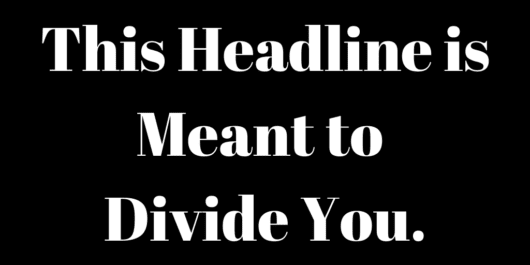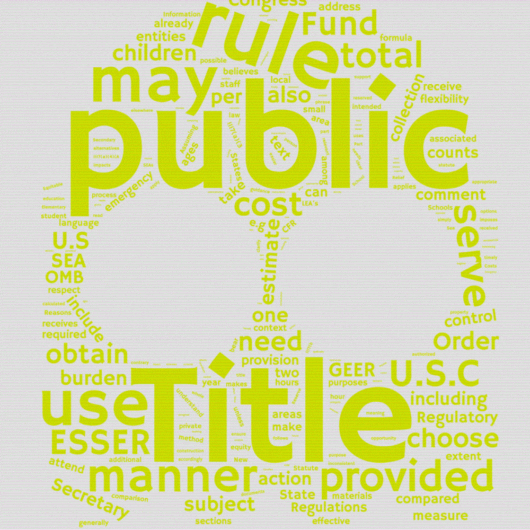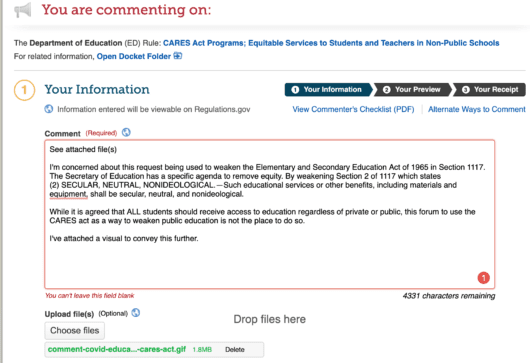Cultural Commentary Project

WHAT TRIGGERED YOU? A new conspiracy by Qanon posted on the Epoch Times Instagram? Perhaps Trump’s body-shaming of a reporter on Twitter? How did you react?
Like. Share. Comment. Forward.
The perfect storm of hyper-targeted marketing, deep learning, and micro-blogging divides public opinion while hiding strategic policy rooted in a new form of malice meant to be implemented without notice. While we have been intentionally distracted federal lands are being sold, immigration laws are being designed to keep out non-white and non-wealthy immigrants and local governments are creating ways to pass opportunities on to specific communities leaving others behind. It’s time to disrupt the media cycle and take agency back to our communities and policies.
I. POLICY AND PUBLIC COMMENTS
THIS IS AN INVITATION TO join me in taking agency through a critical but underutilized public comment system. All government agencies (local, state, and federal) are required to have a public comment option when changing a component of the law. These comments are noted, read, and archived. The policy, agency, duration, and changes state that opportunity to comment is as simple as filling out a form or sending an email. At the other end, someone is reading and recording all submissions. Often the point person dedicated to reading through comments is employed at the local agency. For example, if a proposed policy is local and relates to changing bus lines, a regional transit agent would read the comments. If it is a hefty bill at the federal level, a consulting firm may read through them. In either case, this person(s) must record all comments and provide them as evidence for change, pro or con for the policy. All comments are then handed to whoever is writing the policy and may become part of an amendment or modification to the legislation.
So who makes the comments? While anyone in public can create a comment, submissions are usually from advocacy organizations, lobbyists, or policy enthusiasts. You may have signed a petition from Greenpeace that asks you to “comment” and they provide a pre-filled template to a politician. Often these comments are collected and passed to the analyst or agency office to demonstrate public support. Or a development firm may put a request for leniency in the policy, creating what we know as a “loophole.”
II. ART AS COMMENT
THE CULTURAL COMMENTARY PROJECT is an open-source interventionist artwork by AlterEco Artist Danielle Siembieda. Any creative (artists and others) can participate by submitting artwork in response to the policy text as public comment. In doing this, the policy analyst required to process and understand artwork as it relates to the legislation’s development. In certain aspects, this person becomes an unwilling curator, having to learn and assess the value of the work. They are not allowed to turn it away but instead must record it for historical purposes and, in many cases, make the comment publicly available. In the best-case scenario, the artworks become evidence in front of Congress, creating a new form of argument that uses art as its central exemplar.
Artists can translate complex systems and are not afraid of the unknown. In many respects, not knowing policy language, citations, or protocol allows for new ways of looking at a problem that otherwise would not be illuminated by experts alone. Artists can see patterns and respond with words, sounds, and images if the response calls for it. They can evoke a new way of thinking about how we govern ourselves and where we should go.
III. INSTRUCTIONS FOR ART COMMENTS
FIND AN OPEN POLICY
I like to use Regulations.gov since their platform is transparent, and there are hundreds of plans and comments to go through. You can also go to your local municipality or state website to see what is open near you. You can choose something simple or complex depending on how much homework you want to do.

READ THE WHOLE POLICY NOT JUST THE HEADLINES
This is the most critical component. The project’s intention is to provide legitimate response to a proposed policy not reaction to a clickbaiting headline. It also will verify to the legislative analyst your seriousness about the project. The key is not to be reactionary to the headline but rather to provide a unique approach to the text.

CREATE AN ARTWORK
What you do with the information is up to you. You can focus on a component of the policy, or a repeated word, or find the loopholes throughout it. This is where you, as a creative translator, see how your art can disrupt the system. Your work can be in any medium that can be upload into a simple file such as a .pdf, .png, or simple text.

SUBMIT AND SHARE
The open comment period has deadlines. It’s essential to get it in on time. When submitting the work, you add any citations or information that is helpful to the policy analyst. Please share it on social media and tag #CulturalCommentaryProject

After reading this article, feel free to reach out and share any of the creative comments you have made. An optional invitation is to have Cultural Commentary gatherings with friends to share and discuss one piece of policy. You may find asking questions and sharing ideas becomes generative to the artworks created.
